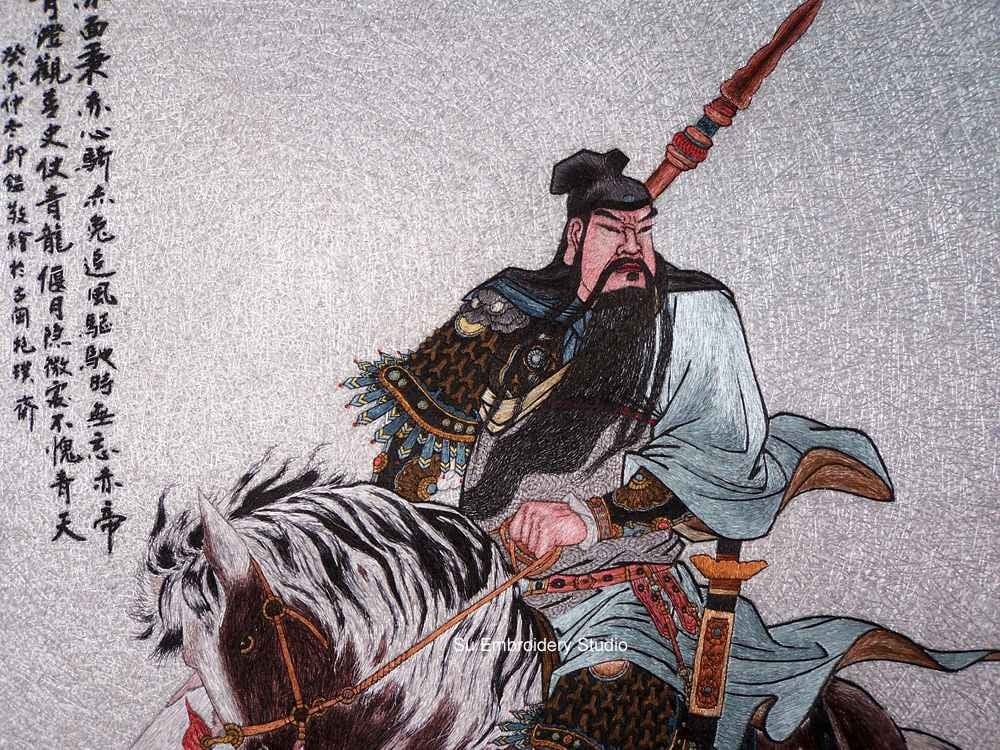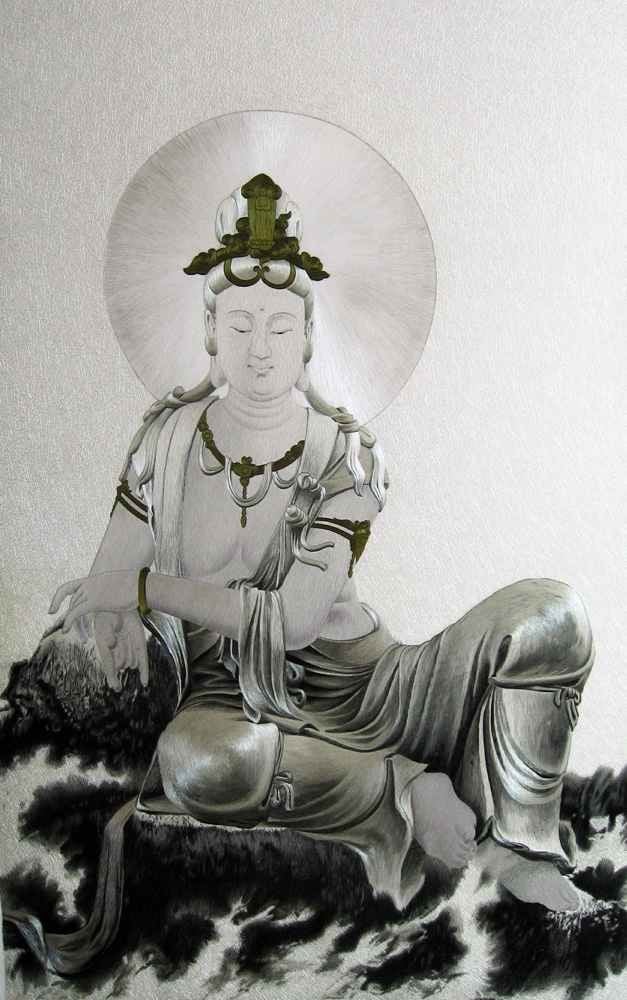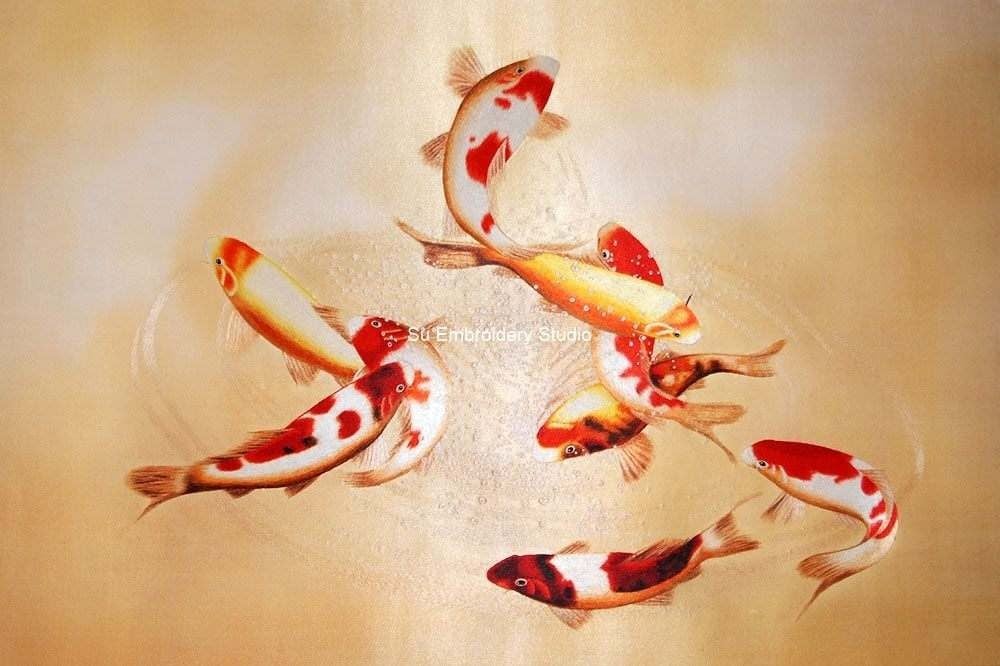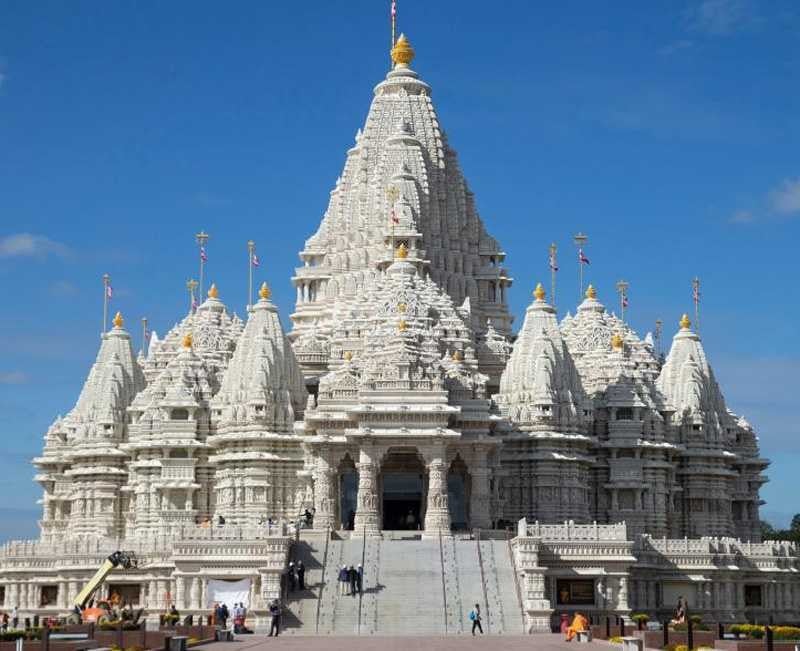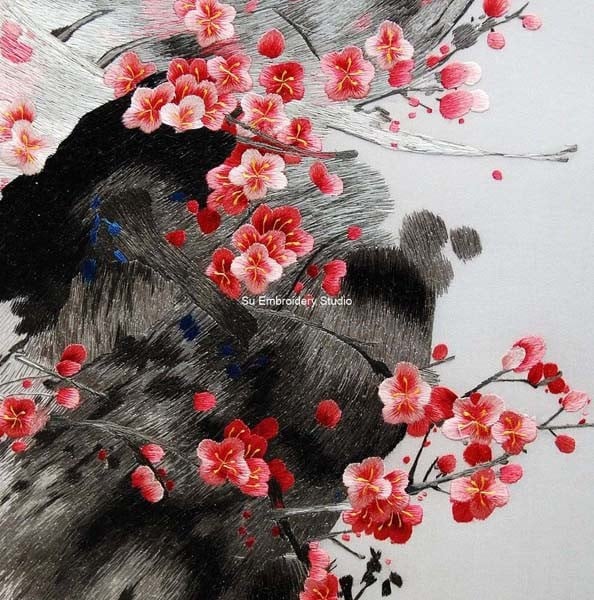
The "Four Gentlemen" (四君子) stand as revered symbols in Chinese painting culture, encapsulating the essence of nature's beauty and embodying virtues associated with each season. These noble plants, often depicted in traditional Chinese brush paintings, not only serve as aesthetic inspirations but also convey deeper cultural and philosophical meanings. Let's delve into each of the Four Gentlemen, exploring their symbolism and the virtues they represent:
1. Plum Blossom (梅花) - Symbol of Perseverance and Winter
The plum blossom, gracing the winter landscape with its delicate blooms, symbolizes resilience and perseverance in the face of adversity. The ability to thrive in the harsh cold reflects the virtue of strength, as the plum blossom perseveres through challenging conditions, mirroring the noble character of individuals who face and overcome life's difficulties.
2. Orchid (兰花) - Symbol of Purity and Spring
Representing spring, the orchid is a symbol of purity, elegance, and modesty. Its delicate and refined beauty captures the essence of a noble gentleman, embodying virtues that include humility and grace. Often associated with scholars and poets, the orchid in Chinese art reflects the pursuit of intellectual and artistic endeavors.
3. Bamboo (竹) - Symbol of Integrity and Summer
The bamboo, flourishing in the warmth of summer, embodies virtues of integrity, flexibility, and endurance. Known for its strength and flexibility, bamboo bends but does not break under pressure, symbolizing moral strength and adaptability. The straight and upright nature of bamboo represents an unwavering commitment to principles, making it an emblem of noble character.
4. Chrysanthemum (菊花) - Symbol of Longevity and Autumn
Representing autumn, the chrysanthemum symbolizes longevity and endurance. Blooming late in the year, the chrysanthemum is associated with the virtue of remaining steadfast in old age. In Chinese culture, the flower is often linked to the ideals of a noble character that withstands the tests of time, embodying wisdom and resilience.
In traditional Chinese art, these Four Gentlemen are featured prominently in brush paintings, calligraphy, and poetry. Their depictions capture the nuanced beauty of each plant, inviting contemplation of the changing seasons and the virtues they represent. The artistry extends beyond mere representation, as artists strive to convey the deeper cultural and philosophical meanings associated with these noble plants. The Four Gentlemen stand as timeless symbols, inspiring not only visual appreciation but also reflection on the virtues that define a noble character in Chinese culture.
In this blog, we will see these Four Gentlemen in a unique art form, silk embroidery. Instead of painting, they are hand embroidered with needles and silk threads.
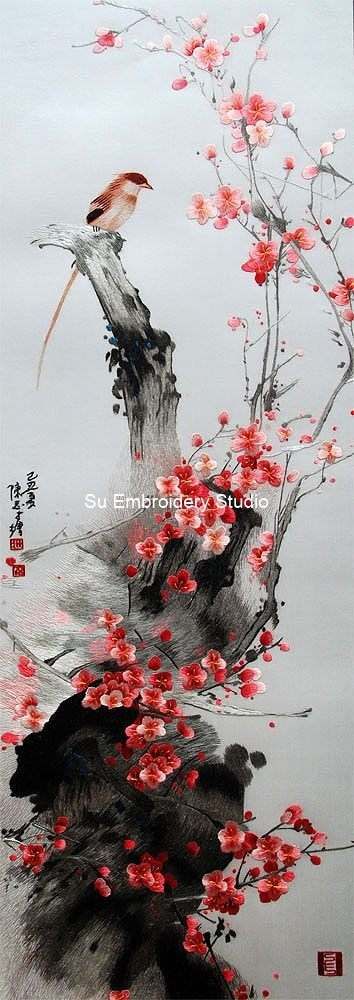
Plum Blossoms, hand embroidered silk painting
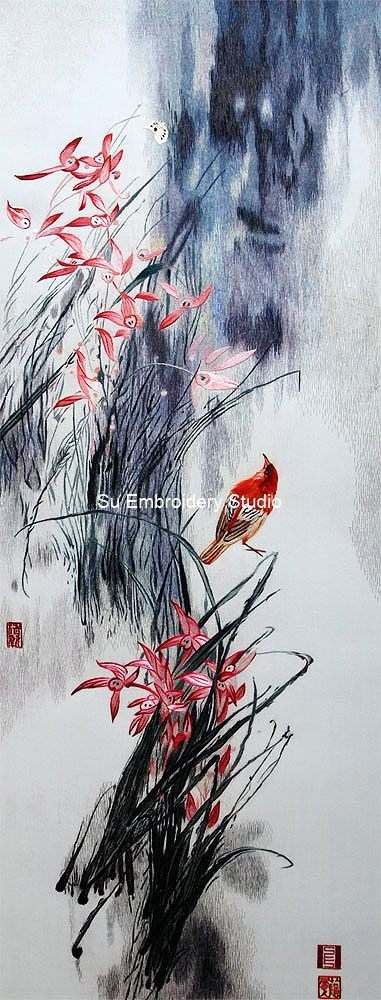
Hand Embroidered Silk Painting, Chinese Orchid Flowers
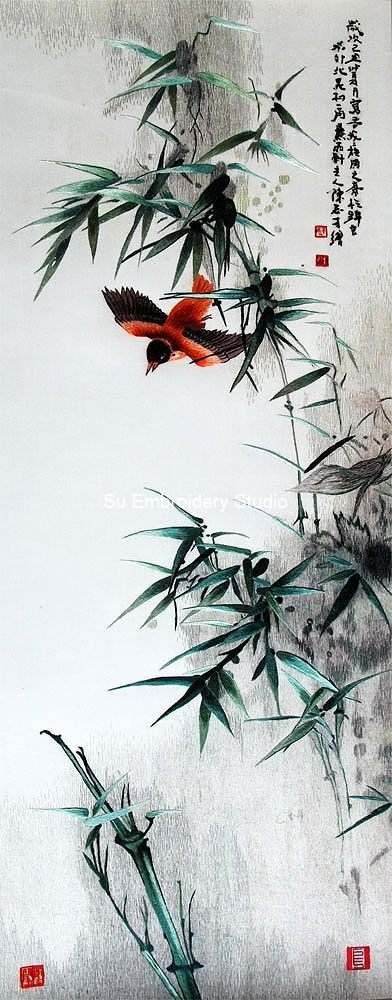
Bamboo Plant, Chinese Silk Embroidery Hand Embroidered
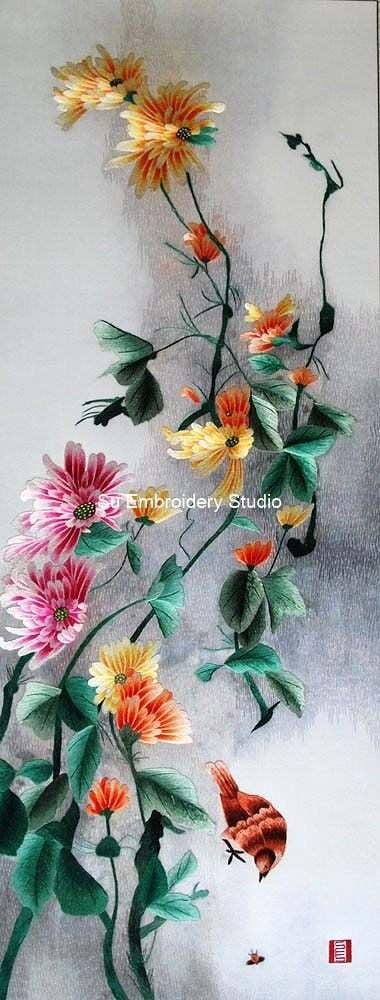
Chrysanthemums, Chinese Silk Embroidered Painting
In the intricate realm of Chinese silk embroidery, the Four Gentlemen stand as more than mere botanical subjects; they are living metaphors, capturing the essence of seasons, virtues, and the enduring beauty of nature. As our exploration unfolds, we witness the convergence of art and philosophy, where every carefully placed stitch tells a story and every vibrant hue resonates with cultural richness.
The Plum Blossom, Orchid, Bamboo, and Chrysanthemum, depicted through the mastery of silk threads, invite us to contemplate the virtues they embody — resilience, elegance, integrity, and wisdom. Beyond the visual allure, these silk embroidered artworks carry the weight of tradition, echoing the profound values embedded in Chinese culture.
As we conclude this journey through the artistry of the Four Gentlemen, let us carry with us not just an appreciation for the exquisite craftsmanship but also a deeper understanding of the cultural tapestry that threads through each delicate creation. May these noble plants in silk embroidery continue to inspire and resonate, reminding us of the enduring beauty found in the intersection of nature, art, and timeless virtues.
by Su Embroidery Studio (SES), Suzhou China
SES is dedicated to Chinese Silk Embroidery Art and High-End Custom Embroidery
Find SES's embroidery work at Chinese Silk Embroidery for Sale.









